Balkinization
an unanticipated consequence of
Jack M. Balkin
Balkinization Symposiums: A Continuing List
E-mail:
Jack Balkin:
jackbalkin at yahoo.com
Bruce Ackerman
bruce.ackerman at yale.edu
Ian Ayres
ian.ayres at yale.edu
Corey Brettschneider
corey_brettschneider at brown.edu
Mary Dudziak
mary.l.dudziak at emory.edu
Joey Fishkin
joey.fishkin at gmail.com
Heather Gerken heather.gerken at yale.edu
Abbe Gluck abbe.gluck at yale.edu
Mark Graber
mgraber at law.umaryland.edu
Stephen Griffin
sgriffin at tulane.edu
Jonathan Hafetz
jonathan.hafetz at shu.edu
Jeremy Kessler
jkessler at law.columbia.edu
Andrew Koppelman
akoppelman at law.northwestern.edu
Marty Lederman
msl46 at law.georgetown.edu
Sanford Levinson
slevinson at law.utexas.edu
David Luban
david.luban at gmail.com
Gerard Magliocca
gmaglioc at iupui.edu
Jason Mazzone
mazzonej at illinois.edu
Linda McClain
lmcclain at bu.edu
John Mikhail
mikhail at law.georgetown.edu
Frank Pasquale
pasquale.frank at gmail.com
Nate Persily
npersily at gmail.com
Michael Stokes Paulsen
michaelstokespaulsen at gmail.com
Deborah Pearlstein
dpearlst at yu.edu
Rick Pildes
rick.pildes at nyu.edu
David Pozen
dpozen at law.columbia.edu
Richard Primus
raprimus at umich.edu
K. Sabeel Rahmansabeel.rahman at brooklaw.edu
Alice Ristroph
alice.ristroph at shu.edu
Neil Siegel
siegel at law.duke.edu
David Super
david.super at law.georgetown.edu
Brian Tamanaha
btamanaha at wulaw.wustl.edu
Nelson Tebbe
nelson.tebbe at brooklaw.edu
Mark Tushnet
mtushnet at law.harvard.edu
Adam Winkler
winkler at ucla.edu
Compendium of posts on Hobby Lobby and related cases
The Anti-Torture Memos: Balkinization Posts on Torture, Interrogation, Detention, War Powers, and OLC
The Anti-Torture Memos (arranged by topic)
Recent Posts
Symmetry’s Domain
Just A Few Blogs
ACS Blog
Alas, a Blog
Althouse
Arts and Letters Daily
Atrios (Eschaton)
Bill of Health
Buzzflash.com
Buzz Machine
Cato at Liberty
Juan Cole (Informed Comment)
Concurring Opinions
The Constitution in 2020
Corrente
Crooked Timber
Daily Howler
Daily Kos
Dana Boyd
Brad DeLong
Digby (Hullabaloo)
Discriminations
Daniel Drezner
Kevin Drum (Mother Jones)
Electrolite
En Banc
Eunomia (Daniel Larison)
Fafblog
Michael Froomkin (Discourse.net)
GovLab (Beth Noveck)
Rick Hasen (Election Law)
History News Network
How Appealing
Ignatz (Sam Heldman)
The Importance of (Ernie Miller)
Infolaw
Instapundit
International Economic Law and Policy Blog
IntLawGrrls
Jacob Levy
Jesus' General
Jurisdynamics
The Kitchen Cabinet
Mark Kleiman
Law Blog Central
Larry Lessig
Lawyers, Guns and Money
Liberal Oasis
Brian Leiter's Law School Reports
The Leiter Reports
Marginal Revolution
Megan McArdle
Memeorandum
Metafilter
Mirror of Justice
The New Republic
Newseum
No More Mister Nice Blog
Brendan Nyhan
Opinio Juris
Orcinus
The Originalism Blog
Pandagon
Passport (Foreign Policy)
Overcoming Bias
Political Animal (Washington Monthly)
Political Theory Daily Review
Political Wire (Taegan Goddard)
The Poor Man
Virginia Postrel
Prawfsblawg
Public Reason
Jonathan Rauch
Raw Story
Redstate
ReligiousLeftLaw.com
Reporters Committee For Freedom of the Press
Reproductive Rights Blog
Rothman's Roadmap to the Right of Publicity
SCOTUS Blog
Seeing the Forest
Clay Shirky
The Shifted Librarian
The Situationist
Larry Solum (Legal Theory)
Andrew Sullivan
Talking Points Memo
Talk Left
Tapped
Tbogg
TechPresident
The Paper Chase (Jurist)
Tom Paine
Tom Tomorrow (This Modern World)
Eve Tushnet
Uggabugga
University of Chicago Law School Faculty Blog
Unqualified Offerings
The Volokh Conspiracy
War and Piece (Laura Rozen)
Wampum
Oliver Willis
Wonkette
Written Description
Matthew Yglesias
Yin
Your Choice of Feeds
1. XML
powered by
2. Atom Feed
3. RSS 2.0
Symmetry’s Domain
Guest Blogger
For the Balkinization symposium on Zachary Price, Constitutional Symmetry: Judging in a Divided Republic (Cambridge University Press, 2024). Jeffrey A. Pojanowski It is a
pleasure to be able to contribute to this symposium on Professor Zachary
Price’s book Constitutional Symmetry: Judging in a
Divided Republic,
which deserves broad and deep and engagement. Everyone reading this symposium
should read this book.
First, I
want to comment on the book’s general virtues before focusing on more discrete
matters. There is a certain pleasure in reading a work whose style embodies its
argument. To use very different examples, Nietzsche’s and Kant’s very different
approaches to writing philosophy mirror what they think philosophy should be. We
see something like that here. Price’s thesis is that, in polarized times, legal
doctrines should reflect reasoned engagement, compromise, and fairness across
ideological divides. His scholarship practices what it preaches. At a time
where public discourse and scholarship veers towards the millenarian or
apocalyptic, Price’s book is refreshingly measured. Although the book is
animated by a crisis, reading it is like taking a good, long walk with a wise
friend, not doom-scrolling. He engages with legal doctrine and the scholarly
literature in a fair, thoughtful fashion that only strengthens the force of his
broader argument. The book’s
thesis is also ambitious and restrained. Price offers a grand theory for
constitutional adjudication today. He argues that constitutional symmetry finds
justification on three grounds: an updated and improved version Ely’s political
process theory; a moral reading of the judicial role; and original
methods of interpretation. (Price’s argument for symmetry at the level of
doctrine recapitulates at the level of justification; there are many rooms in
his theoretical house.) It also has wide-ranging applications: the First
Amendment, separation of powers, Equal Protection, the Second Amendment,
fundamental rights, and the law of democracy all get treatment here. At the same
time, Price avoids the perils of cosmic constitutional theory. He is not here
to tell everyone to whether to be an originalist or a living constitutionalist.
Rather, he makes the more modest argument that whenever your preferred method
of interpretation has play in the joints or requires implementing doctrines,
you should resolve those indeterminacies or build those structures with an eye
toward symmetry. The spread of his theory is total, but it is not totalizing.
Thus, living constitutionalists should give the aims of symmetry a more
decisive role when considering contemporary public values. When originalists find
themselves in the “construction zone,” they should prioritize symmetry rather
than, say, popular sovereignty or a presumption of liberty. Now, it’s
easy for anyone who has read Peter Westen to scoff that equality’s cousin, symmetry, too, can be
empty. I started thinking about that myself as I read Price’s treatment of
administrative law, the doctrinal corner of his book I know best. Think of Chevron
doctrine (RIP?). Under a regime of strong deference, it would be just as
easy for conservative agencies to get their way as it would be for progressive
agencies. Under a non-deferential regime, it would be just as hard for
conservative and progressive agencies. The same holds for
arbitrary-and-capricious review: a hard-look version of State Farm can
be as much of an obstacle for Trump as it is for Biden. The only way to
introduce asymmetry would be for partisan courts to toggle between deference
regimes based on the party in power. So, at first glance, it appears that
symmetry already exists in administrative law. Whether we pick deference
or not, we’ve got symmetry. Yet administrative law remains very much a hot spot
in our divided politics. Thus, either symmetry is not getting us what we want
out of it or it is toothless in the face of judges who apply symmetrical rules
in an asymmetrical fashion. If it is the latter, we have a pretty pernicious inside-the-system or outside-the-system problem. Price,
however, deftly shows that this is too simple a way of thinking about symmetry.
The choice to defer is itself not neutral, even though the regime treats
agencies of both parties with formal equality. Deference doctrine, he contends,
is more amenable to vigorous, nimble, and powerful federal governance, and
therefore can have a partisan political valence. (Or at least it does to
the extent we identify conservative politics with small, decentralized federal
government. That characterization has been generally accurate in United States,
but is not inevitable. There is a kind of conservativism that is happy to
implement its policy preferences through a powerful federal government.) Thus,
a regime of non-deference across-the-board leans conservative as a systematic
manner, while a deferential regime tilts progressive. Here, Price invokes an article by then-Judge Stephen Breyer (and one by a far-less significant figure) to offer an example
of symmetry at a higher level of doctrinal arrangement: no deference on
questions of law, while greater deference in review of agency policy making.
The progressive centralizers and the Country Party conservatives each get half a loaf.
People can disagree about whether this balance is the best outcome, and there
are arguments on its behalf that do not turn on symmetry. But it is a meaningfully
symmetrical compromise and, in Price’s lights, that is something very much in
its favor. It is also not the regime we have, at least with respect to arbitrary-and-capricious
review, so the current contretemps in administrative of law are not disproof of
concept. Symmetry
does get trickier, I think, when we are dealing with interpretive questions as
opposed to building doctrinal regimes. Price’s discussion of the Major Question
Doctrine is illustrative. Under the MQD, the Court expects Congress to speak
clearly when it gives agencies power to exercise powers of vast economic and
social significance. In its older, weak form, the MQD simply displaced Chevron
deference, rather than dictating the ultimate meaning of the statute. Under
the newer, strong form of the doctrine, the court will adopt a presumption
against such agency power when giving meaning to the statute itself. Price recognizes
that even a strong form of the doctrine could itself be symmetrical. There can
be elephants in mouseholes that help GOP’s elephants, such as ancillary
language an aggressive interpreter could read as allowing serious deregulation
or requiring cost-benefit analysis for agency decisionmaking. Yet Price
contends that a strong from of the doctrine itself has a political tilt similar
to non-deference doctrine, namely a presumption against delegation to
energetic, powerful federal agencies. A strong form of the doctrine will lead to
more outcomes like West Virginia v. EPA than MCI v. AT&T and not by coincidence, and is
therefore suspect. I think the
strength of this argument turns on whether you see “major questions” as a
“doctrine” or an interpretive upshot. If the MDQ is a doctrine we create
outside of the ordinary science of legal interpretation, Price’s argument can
have ready bite. But what if you think, as Justice Barrett argued in her
concurrence in Biden v. Nebraska, that it is a common-sense inference
from the way we use language? And that common-sense inference can be neutral
with respect to freedom to regulate. Consider Justice Barrett’s babysitter
analogy. It would be strange for a babysitter to interpret the instruction to
show the kids a good time as a license to fly them to Disney World. In the same
fashion, it is not plausible to read “make sure the kids are in bed at ten” as restraining
the sitter from sending a deathly ill child off in an ambulance at 10:05. We
don’t expect Congress to hide the ball on the big stuff, whether that stuff empowers
of disempowers agencies. Price
objects that Justice Barrett’s appeal to common-sense textualism nevertheless
packs in implicit constitutional value judgments. It is possible that Congress wants
agencies to have flexibility to fill in gaps, either because it likes energetic
agencies or it wants to avoid accountability. A presumption the other way, he
contends, is a legal fiction grounded in constitutional values of congressional
responsibility for policymaking. This, Price suggests, is not symmetrical. Whether Price is right or not on this
particular critique, this kind of argument raises questions about how far down
the press for symmetry should go in constructing theories of interpretation.
You can imagine symmetry-based arguments that courts should avoid using a host
of substantive canons. We would have to ask if the rule of lenity, the
presumption against extraterritoriality, inferences in favor of veterans or
Native Americans, and the like, are symmetrical. If not, we’d have to ask
whether to jettison them or, in an echo of Price’s move on deference regimes,
adopt a diversified portfolio of substantive canons that offers something to
both sides. It gets even trickier when we consider Price’s argument that, as
with Justice Barrett’s concurrence, inferences from semantic and pragmatic
context can be the product of a kind of normative astigmatism that skews
interpretation in non-symmetrical ways. If interpretive normativity cuts down
that deep, we have to ask whether one should build symmetry into the DNA of
interpretive methods. If so, that would undermine Price’s argument that
symmetry comes in only when you have interpretive uncertainty; considerations
of symmetry might inform what counts as interpretation or uncertainty in
the first place. Symmetry’s domain might be greater than we initially thought.
If it is not, we need to think more about how to draw the line between fallback
approaches like Price’s and the first-order constitutional interpretation to
which it is supposed to be a helpmate. My worry is
not fatal to the project, of course. If anything, it shows how Price’s theory
can generate new questions and help us think through old ones in fresh ways. I
am not convinced by every particular argument in the book and I am not sure
about how the laudable goal of symmetry should mesh with approaches to
interpretation in general. I have, however, benefited immensely from reading
it, enjoyed reading it, and am continuing to think through its incisive
arguments and their wide-ranging implications. That’s exactly what a great work
of legal scholarship should do. Jeffrey A. Pojanowski (pojanowski@nd.edu) is the Biolchini Family Professor
of Law at Notre Dame Law School.
Posted
9:30 AM
by Guest Blogger [link]
Books by Balkinization Bloggers

Gerard N. Magliocca, The Actual Art of Governing: Justice Robert H. Jackson's Concurring Opinion in the Steel Seizure Case (Oxford University Press, 2025)

Linda C. McClain and Aziza Ahmed, The Routledge Companion to Gender and COVID-19 (Routledge, 2024)

David Pozen, The Constitution of the War on Drugs (Oxford University Press, 2024)

Jack M. Balkin, Memory and Authority: The Uses of History in Constitutional Interpretation (Yale University Press, 2024)
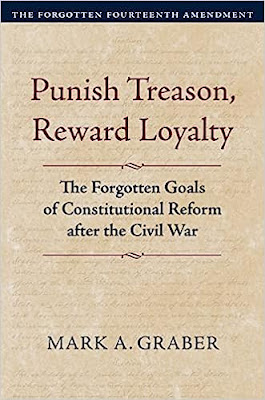
Mark A. Graber, Punish Treason, Reward Loyalty: The Forgotten Goals of Constitutional Reform after the Civil War (University of Kansas Press, 2023)
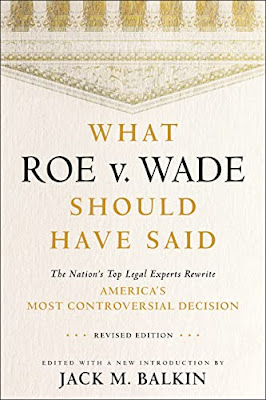
Jack M. Balkin, What Roe v. Wade Should Have Said: The Nation's Top Legal Experts Rewrite America's Most Controversial Decision - Revised Edition (NYU Press, 2023)

Andrew Koppelman, Burning Down the House: How Libertarian Philosophy Was Corrupted by Delusion and Greed (St. Martin’s Press, 2022)

Gerard N. Magliocca, Washington's Heir: The Life of Justice Bushrod Washington (Oxford University Press, 2022)
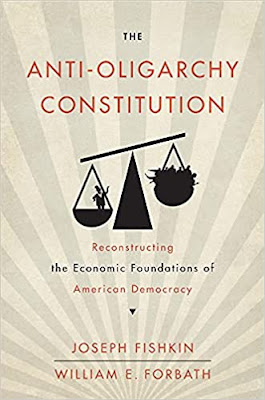
Joseph Fishkin and William E. Forbath, The Anti-Oligarchy Constitution: Reconstructing the Economic Foundations of American Democracy (Harvard University Press, 2022)
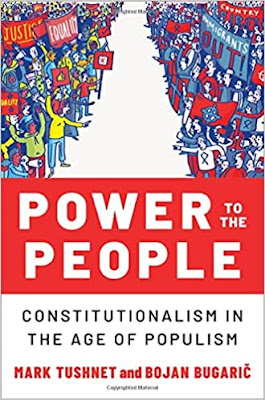
Mark Tushnet and Bojan Bugaric, Power to the People: Constitutionalism in the Age of Populism (Oxford University Press 2021).

Mark Philip Bradley and Mary L. Dudziak, eds., Making the Forever War: Marilyn B. Young on the Culture and Politics of American Militarism Culture and Politics in the Cold War and Beyond (University of Massachusetts Press, 2021).

Jack M. Balkin, What Obergefell v. Hodges Should Have Said: The Nation's Top Legal Experts Rewrite America's Same-Sex Marriage Decision (Yale University Press, 2020)

Frank Pasquale, New Laws of Robotics: Defending Human Expertise in the Age of AI (Belknap Press, 2020)

Jack M. Balkin, The Cycles of Constitutional Time (Oxford University Press, 2020)

Mark Tushnet, Taking Back the Constitution: Activist Judges and the Next Age of American Law (Yale University Press 2020).

Andrew Koppelman, Gay Rights vs. Religious Liberty?: The Unnecessary Conflict (Oxford University Press, 2020)

Ezekiel J Emanuel and Abbe R. Gluck, The Trillion Dollar Revolution: How the Affordable Care Act Transformed Politics, Law, and Health Care in America (PublicAffairs, 2020)

Linda C. McClain, Who's the Bigot?: Learning from Conflicts over Marriage and Civil Rights Law (Oxford University Press, 2020)
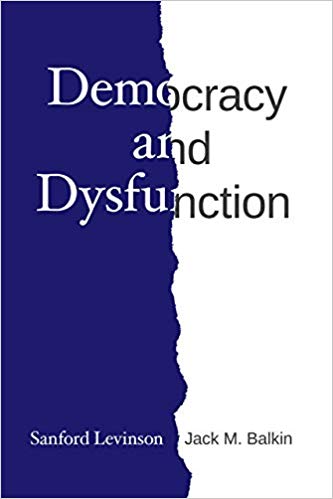
Sanford Levinson and Jack M. Balkin, Democracy and Dysfunction (University of Chicago Press, 2019)

Sanford Levinson, Written in Stone: Public Monuments in Changing Societies (Duke University Press 2018)

Mark A. Graber, Sanford Levinson, and Mark Tushnet, eds., Constitutional Democracy in Crisis? (Oxford University Press 2018)

Gerard Magliocca, The Heart of the Constitution: How the Bill of Rights became the Bill of Rights (Oxford University Press, 2018)

Cynthia Levinson and Sanford Levinson, Fault Lines in the Constitution: The Framers, Their Fights, and the Flaws that Affect Us Today (Peachtree Publishers, 2017)

Brian Z. Tamanaha, A Realistic Theory of Law (Cambridge University Press 2017)

Sanford Levinson, Nullification and Secession in Modern Constitutional Thought (University Press of Kansas 2016)

Sanford Levinson, An Argument Open to All: Reading The Federalist in the 21st Century (Yale University Press 2015)

Stephen M. Griffin, Broken Trust: Dysfunctional Government and Constitutional Reform (University Press of Kansas, 2015)

Frank Pasquale, The Black Box Society: The Secret Algorithms That Control Money and Information (Harvard University Press, 2015)

Bruce Ackerman, We the People, Volume 3: The Civil Rights Revolution (Harvard University Press, 2014)
Balkinization Symposium on We the People, Volume 3: The Civil Rights Revolution

Joseph Fishkin, Bottlenecks: A New Theory of Equal Opportunity (Oxford University Press, 2014)

Mark A. Graber, A New Introduction to American Constitutionalism (Oxford University Press, 2013)

John Mikhail, Elements of Moral Cognition: Rawls' Linguistic Analogy and the Cognitive Science of Moral and Legal Judgment (Cambridge University Press, 2013)

Gerard N. Magliocca, American Founding Son: John Bingham and the Invention of the Fourteenth Amendment (New York University Press, 2013)

Stephen M. Griffin, Long Wars and the Constitution (Harvard University Press, 2013)

Andrew Koppelman, The Tough Luck Constitution and the Assault on Health Care Reform (Oxford University Press, 2013)

James E. Fleming and Linda C. McClain, Ordered Liberty: Rights, Responsibilities, and Virtues (Harvard University Press, 2013)
Balkinization Symposium on Ordered Liberty: Rights, Responsibilities, and Virtues

Andrew Koppelman, Defending American Religious Neutrality (Harvard University Press, 2013)

Brian Z. Tamanaha, Failing Law Schools (University of Chicago Press, 2012)

Sanford Levinson, Framed: America's 51 Constitutions and the Crisis of Governance (Oxford University Press, 2012)

Linda C. McClain and Joanna L. Grossman, Gender Equality: Dimensions of Women's Equal Citizenship (Cambridge University Press, 2012)

Mary Dudziak, War Time: An Idea, Its History, Its Consequences (Oxford University Press, 2012)

Jack M. Balkin, Living Originalism (Harvard University Press, 2011)

Jason Mazzone, Copyfraud and Other Abuses of Intellectual Property Law (Stanford University Press, 2011)

Richard W. Garnett and Andrew Koppelman, First Amendment Stories, (Foundation Press 2011)

Jack M. Balkin, Constitutional Redemption: Political Faith in an Unjust World (Harvard University Press, 2011)

Gerard Magliocca, The Tragedy of William Jennings Bryan: Constitutional Law and the Politics of Backlash (Yale University Press, 2011)

Bernard Harcourt, The Illusion of Free Markets: Punishment and the Myth of Natural Order (Harvard University Press, 2010)

Bruce Ackerman, The Decline and Fall of the American Republic (Harvard University Press, 2010)
Balkinization Symposium on The Decline and Fall of the American Republic

Ian Ayres. Carrots and Sticks: Unlock the Power of Incentives to Get Things Done (Bantam Books, 2010)

Mark Tushnet, Why the Constitution Matters (Yale University Press 2010)
Ian Ayres and Barry Nalebuff: Lifecycle Investing: A New, Safe, and Audacious Way to Improve the Performance of Your Retirement Portfolio (Basic Books, 2010)
.jpg)
Jack M. Balkin, The Laws of Change: I Ching and the Philosophy of Life (2d Edition, Sybil Creek Press 2009)

Brian Z. Tamanaha, Beyond the Formalist-Realist Divide: The Role of Politics in Judging (Princeton University Press 2009)
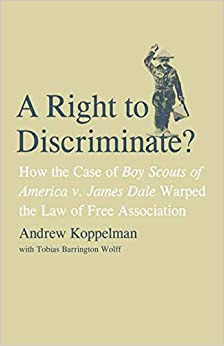
Andrew Koppelman and Tobias Barrington Wolff, A Right to Discriminate?: How the Case of Boy Scouts of America v. James Dale Warped the Law of Free Association (Yale University Press 2009)

Jack M. Balkin and Reva B. Siegel, The Constitution in 2020 (Oxford University Press 2009)
Heather K. Gerken, The Democracy Index: Why Our Election System Is Failing and How to Fix It (Princeton University Press 2009)

Mary Dudziak, Exporting American Dreams: Thurgood Marshall's African Journey (Oxford University Press 2008)

David Luban, Legal Ethics and Human Dignity (Cambridge Univ. Press 2007)

Ian Ayres, Super Crunchers: Why Thinking-By-Numbers is the New Way to be Smart (Bantam 2007)

Jack M. Balkin, James Grimmelmann, Eddan Katz, Nimrod Kozlovski, Shlomit Wagman and Tal Zarsky, eds., Cybercrime: Digital Cops in a Networked Environment (N.Y.U. Press 2007)

Jack M. Balkin and Beth Simone Noveck, The State of Play: Law, Games, and Virtual Worlds (N.Y.U. Press 2006)

Andrew Koppelman, Same Sex, Different States: When Same-Sex Marriages Cross State Lines (Yale University Press 2006)
Brian Tamanaha, Law as a Means to an End (Cambridge University Press 2006)
Sanford Levinson, Our Undemocratic Constitution (Oxford University Press 2006)
Mark Graber, Dred Scott and the Problem of Constitutional Evil (Cambridge University Press 2006)
Jack M. Balkin, ed., What Roe v. Wade Should Have Said (N.Y.U. Press 2005)
Sanford Levinson, ed., Torture: A Collection (Oxford University Press 2004)
Balkin.com homepage
Bibliography
Conlaw.net
Cultural Software
Writings
Opeds
The Information Society Project
BrownvBoard.com
Useful Links
Syllabi and Exams